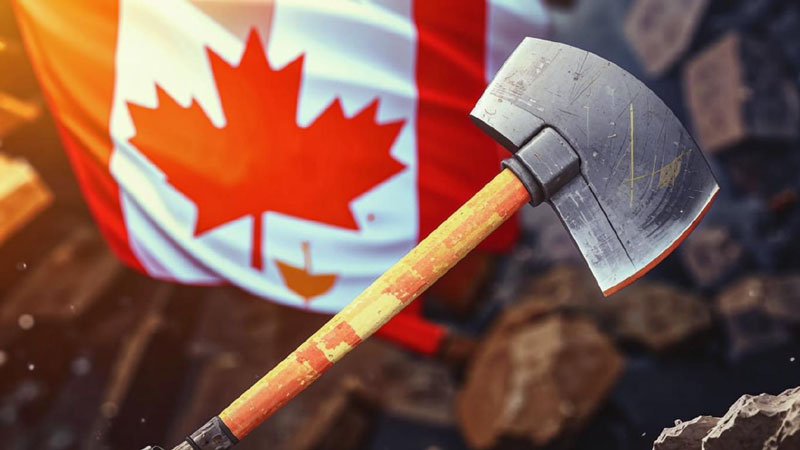Canada could replace China in rare earth supplies if it gets rid of bureaucracy


At the end of the year, Canadian authorities published an annual review of the country’s mining strategy. The document highlights Canada’s progress and future plans to expand its mining industry and, above all, in the production of rare earth elements and elements for the production of chips. But experts note that bureaucracy ruins everything, because it takes 10–15 years to open each new mine. That’s not how things are done.


Image source: AI generation Kandinsky 3.1/3DNews
The authorities call such elements that are under immediate threat in modern supply chains as critical for speedy production in the country. Also, such minerals or elements must be important to Canada’s economy and national security, as well as lead to zero greenhouse gas emissions. Ultimately, the extraction of these strategic elements should turn the country into a sustainable strategic partner in the global supply chain. The final document of the 2024 edition defines 34 such elements, among which the authorities named lithium, graphite, nickel, cobalt, copper and rare earth elements as priorities.
Canada was forced to think about its own production of rare earth elements and other strategically important minerals by the current circumstances when China announced a policy of tightening control over the supply of such elements to Western partners. This forced Australia to look for ways to replenish resources that, due to restrictions, may be in short supply. China’s demarche has jeopardized the global production of semiconductors and batteries, which is why we have to look for an alternative.
Experts note that with the current practice in Canada of delaying the issuance of permits for the opening of each new mine for up to 10–15 years, the country has no chance of competing in the field of raw material extraction with the United States, Australia and China. Moreover, even if in 10 years the development of mines, for example, for the extraction of lithium, is allowed, this element may not be required for new generations of batteries, and it will turn out that everything was started in vain. We can only hope that the experts are not mistaken and can more or less accurately predict the need for certain elements for many years to come. In this case, Canada eventually has a chance to become a major power, producing strategic raw materials at home and relying little on their imports.
Recent Posts
MSI MPG Infinite X3 AI 2nd System Unit Review: All That’s Left to Do Is Play
As part of the expansion of the diversity of the "Laptops and PCs" section, it's…
Curator Deflects Largest DDoS Botnet in History with 4.6 Million Devices
Curator (formerly Qrator Labs) reported successfully neutralizing the largest DDoS botnet ever observed, consisting of…
Gigabyte Introduces AORUS Z890 Tachyon ICE Motherboard Without Conventional DIMM Slots — Only CAMM2
Gigabyte has unveiled the AORUS Z890 Tachyon ICE motherboard at Computex 2025, which features CAMM2…
Trump tariffs will break the internet, analysts fear
The trade war started by Donald Trump, involving almost all countries in the world, threatens…
Google has started filling its AI Mode search with unstoppable ads
Google has begun testing ads in its new AI-powered search feature, AI Mode. Now, when…
SnowRunner creators’ ‘revolutionary’ RoadCraft simulator earns ‘mixed’ reviews on Steam release
As promised, the “revolutionary” construction simulator RoadCraft from Saber Interactive (SnowRunner, Expeditions: A MudRunner Game)…